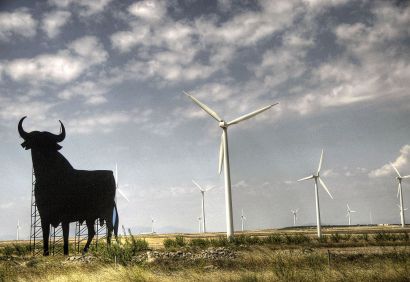Cepsa Energy Outlook 2030 contains a specific chapter dedicated to Spain, a global reference in the energy sector due to its geostrategic location, its adoption of renewable energies and its oil production and storage infrastructure. The research on Spain delves into economic growth, population trends, sector regulation and energy demand, among other subjects.
The launch, which took place in Madrid today, was attended by Spain’s Minister for Energy, Tourism and Digital Agenda, Álvaro Nadal, who stated: “The Spanish government wants to take the right decisions to continue growing, to be competitive, and respecting the environment. I congratulate Cepsa for this report, a much needed work in Spain which is based on a sound reflection.”
Meanwhile, Héctor Perea, director of Strategy at Cepsa, stressed: “In our report we anticipate an evolution of the energy mix: oil derivatives will continue to dominate, but renewable energies will be the clear winners. We expect that by 2030, the production of solar and wind energy in Spain will double compared to current production.”
Spain’s energy map in 2030
Oil products will continue to lead the Spanish energy mix in the future. In fact, oil will account for almost half of energy demand in 2030, although it will gradually weaken, from 46 million tonnes of oil equivalent (Mtoe) to 37 Mtoe. Renewable energies, natural gas and biomass will continue to grow, to the detriment of fossil fuels such as coal.
Electricity, which represents a quarter of Spanish energy demand, will favor the expansion of renewable energy sources, especially in the form of wind and solar energy. Spain will obtain 60% of its energy mix from renewable sources by 2030. The installed capacity of renewable, wind and solar photovoltaic plants will increase in Spain to 47 GW and 29 GW respectively compared with 23 GW and 7 GW currently.
Future of transport
Demand for road fuel fuels will decrease by 1.7 million tonnes over the next few years, due to the increasing efficiency of new vehicles in terms of consumption and the increase in the sale of electric cars. Heavy goods vehicles, such as trucks and buses, will maintain constant demand through increased activity and efficiency gains will be more modest.
According to this study, combustion engines will account for 96% of the mobile fleet in Spain in 2030, with petrol being levied against diesel, and car registrations falling from 61% to 15%.
Electric cars will experience moderate but continuous growth, their share of sales will be 15% of the total, compared to negligible levels seen today. However, hybrids will be more competitive and economical and will become the preferred option for meeting Europe’s emissions targets, reaching 35% of the total. As such, by 2030, half of new vehicles are expected to have some kind of electrification.
A different approach: Regulators, Energizers and Consumers
In order to carry out this study, and always linked to energy, Cepsa has grouped the regions of the world together into three categories, taking into account aspects such as regulation, production and energy consumption. In turn the world’s regions have been dubbed Regulators, Energizers and Consumers, and the behavior of each will be key in determining the shape of the 2030 energy map.
Regulators are OECD countries (except Mexico) exposed to a regulated energy market where lower demand is expected; Energizers are the exporting energy resource leaders (oil and gas), which include countries in Latin America, Africa, the Middle East and the former Soviet republics; and Consumers are all Asian countries, given the high energy consumption they will have in the future.


